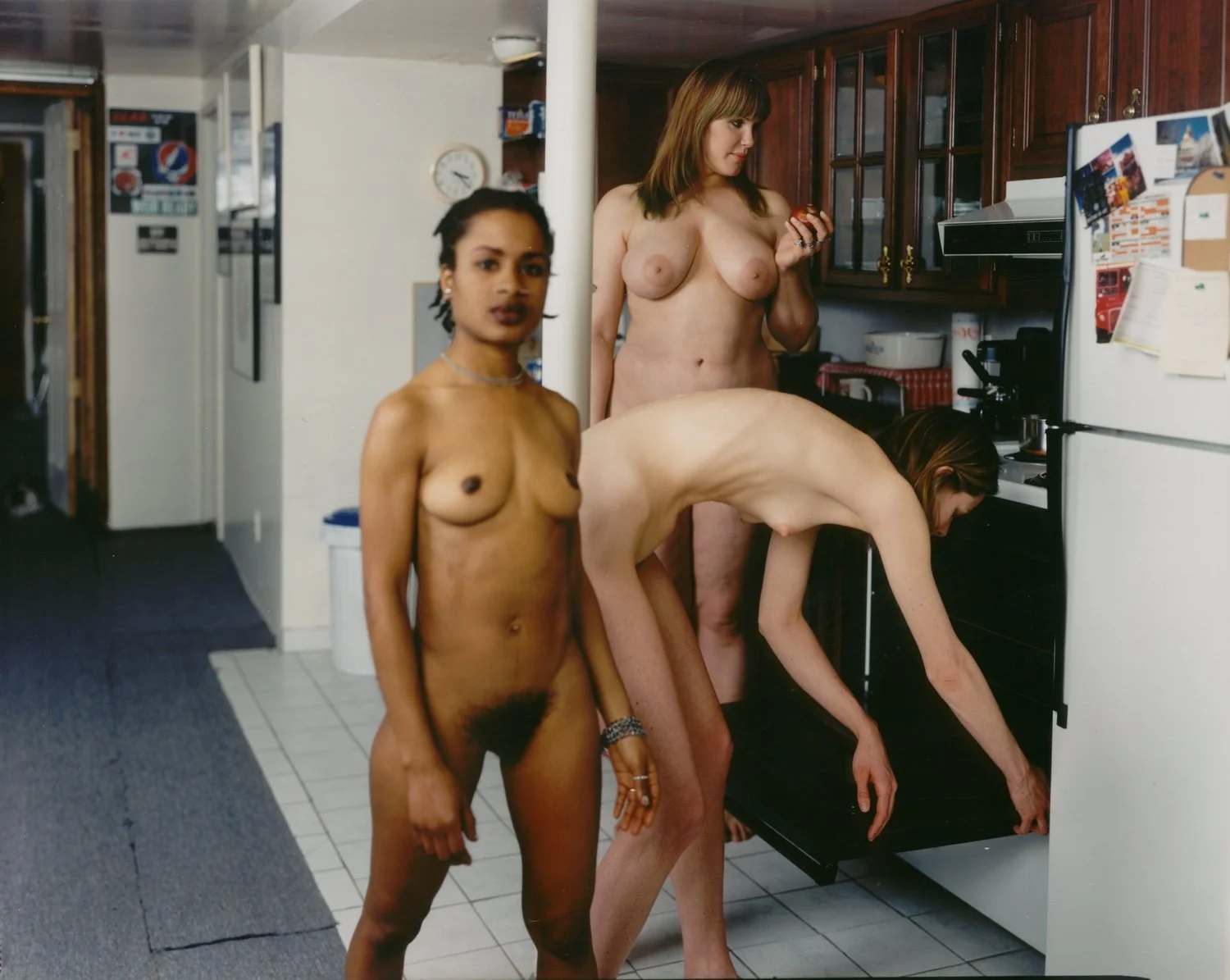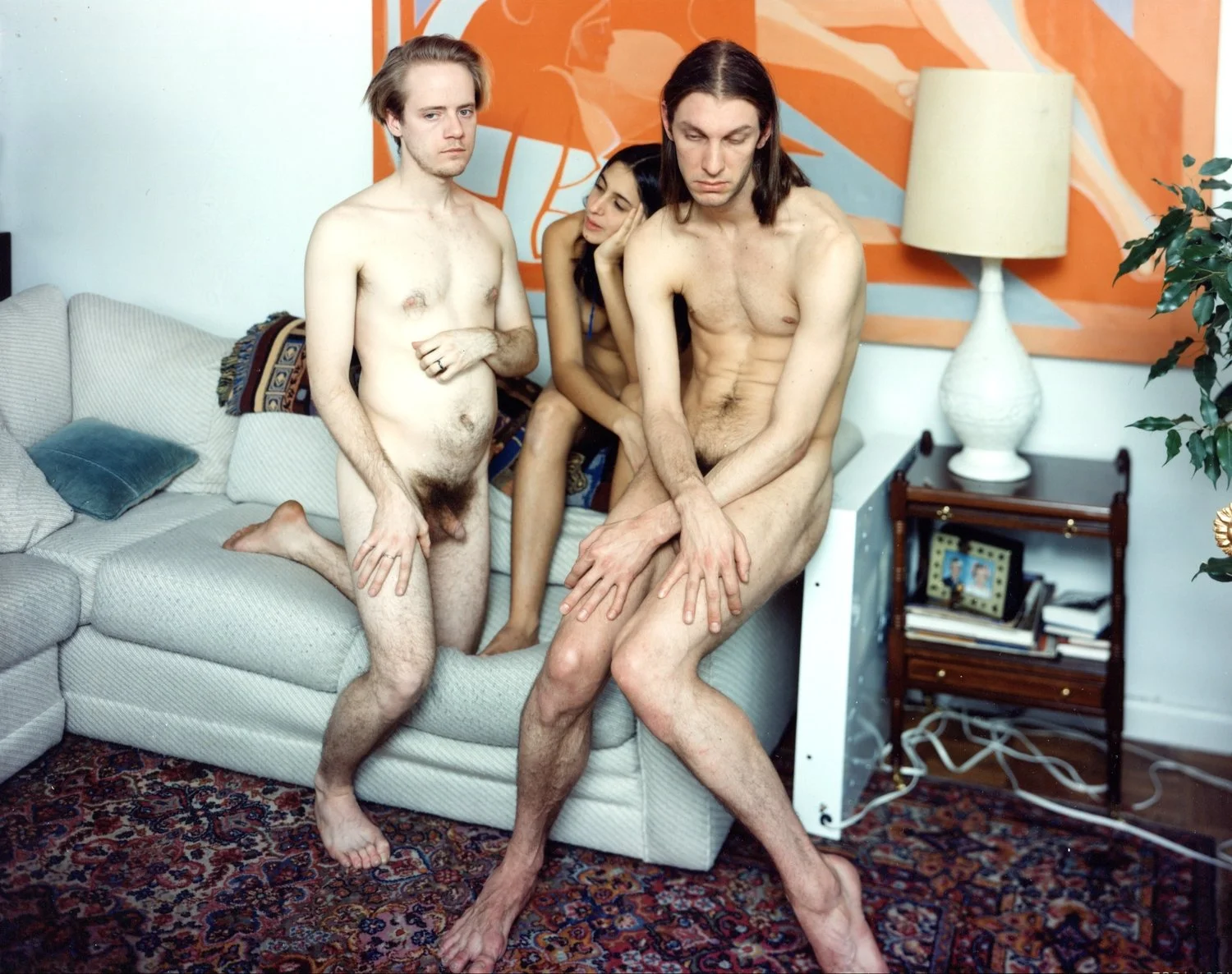TINA BARNEY, NUDES
“A lesser known part of Barney's back catalougue however, is the series of nude portraits she created in the early 1990s. Exhibited just once and since left to gather dust in a closet in her Rhode Island home, in these rarely seen photographs Barney reacted against what she says had become for her the somewhat stilted poses of her friends and family. She used them to explore a new avenue of artistic endeavour - one which while it may have had the naked human body at its core was fundamentally not about sex, nudity, or even, she says, the body itself. Confused? Hopefully you won't be after reading on.
"I had been connected to the New York City School for Painting and Sculpture for some time, because deep down I would love to draw and paint! But I’d always been interested in nudes so I asked the school if I could photograph some of their models. All I knew at the time is that I didn't want them to be in 'a typical nude model environment', I wanted the photos to be more personal. So, after hiring them, I asked if I could shoot them where they lived. I shot them on 8 X 10 and when I got the contacts back I immediately realised why most artists try at some point to work with the nude - it’s because of the skin, and the colours of the skin!
"My photographic work often gets labelled as the upper class at home - and, it's true, interior is very important to me - but deep down, the human figure is perhaps what I am really in love with - it's certainly a primary interest. That said, I don’t know if it has anything to do with the fact that it’s a human being. Basically, to me, photographing the body is the same as photographing apples and oranges in a still life. I actually think it has to do with the form.
“So with the nude photographs, I don’t think I was interested at all in making a narrative. I wasn’t interested at all in trying to understand any kind of emotion or the meaning of a facial expression. The body was really what it was about - but kind of in an anonymous way. The photographs were never about those specific human beings."
Barney says at this point she had become "tired" of photographing family and friends. "They weren’t actors and they’d get stiff and they couldn’t remove themselves, and then I got these people that were willing to get into the role and that was very exciting for me.
“First of all there was this clinical kind of understanding, an automatic unconscious understanding that this should be really clinical. It was as if I were a surgeon and I’d gone into the operating room. There was a separation between the fact that this is a human being and that they were naked. I did not want the photos to ever be about sex. It really was about formality, composition, structure, texture, light, and form.
"What I think is interesting is that if you take a room and then you put a human being into it, dressed or not dressed, and you could introduce a doll or a crate or anything else what’s the difference between the human being and those other things that aren’t alive? It’s hard to separate in my mind the difference between a human being and the fact that they are alive. I think, for me, a huge part of it is the skin. Because in all the pictures I’ve done in my own work, the hands are crucial. And I think the skin is what sort of attracts my eye when I'm under the dark cloth.” - Phaidon





